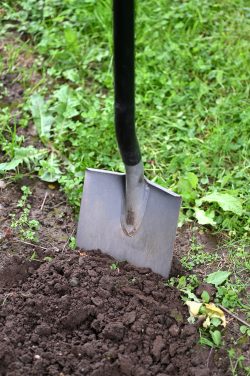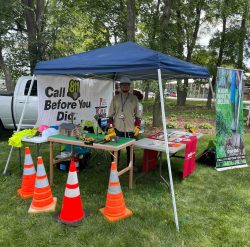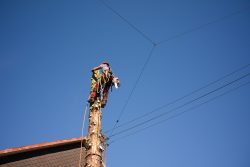Spring into action by calling ComEd for any Spring digging or tree trimming projects
April 4, 2024
As the warmth of spring fills the air, thoughts often turn to landscaping and outdoor home improvement projects. During this time, it is crucial to remember the importance of safety. And for National Safe Digging Month (NSDM) in April, ComEd is focusing on empowering customers to stay safe while embracing the joys of spring.
What lies beneath the surface?

Underground utility lines crisscross communities, delivering essential services to homes and businesses. That’s why ComEd encourages all their customers to call 811 before digging at least 2 business days prior to starting any digging project.
By calling this simple number, a representative will coordinate with utility companies to mark the location of underground lines, ensuring that digging is done safely and responsibly.
“As we enter the spring season, it’s crucial for our customers to understand the importance of safety when it comes to outdoor activities that involve digging,” said Sergio Salgado, Damage Prevention Investigator at ComEd. “By calling 811 before digging, our customers can prevent accidents and protect themselves and their communities because live powerlines can be dangerous.”
Illinois law requires residents and professional excavators to call 811 at least 48 hours or two working days prior to starting an excavation. “Whether you plan to plant a tree, install a mailbox, create a garden, or build a deck – regardless of the depth and size of the project you must call 811,” emphasized Sergio.

Sergio at Kendall County Fair setting up for ComEd’s education station area.
The leading cause of underground utility damage to ComEd electric lines continues to be excavators hitting accurately marked cables and failure to call into 811 for a locate request. Homeowners and excavators can help protect themselves from injury, project delays, and the high costs associated with any utility damage by ensuring that they call 811.
ComEd’s Damage Prevention Group is dedicated to providing education and assistance to customers and excavators regarding safe excavation around ComEd underground electric lines. “Safe digging is everyone’s responsibility. We provide both office and field personnel to assist you with all issues related to excavation activities throughout our service territory,” added Sergio.
Overgrown branches have the power to cause outages:
But safety isn’t isolated to just the underground. As trees burst into bloom and branches reach for the sky, it’s essential to keep an eye on their proximity to power lines. Overgrown branches that come into contact with power lines pose a significant safety hazard and cause about 21% of all electric service interruptions. That’s why regular tree trimming is crucial to maintaining a safe distance between trees and power lines.
Preventive pruning around aerial power lines is vital to providing reliable electric service. “By understanding the importance of regular tree maintenance, you can help prevent outages and keep a community safe,” added Sergio.
ComEd’s Vegetation Experts provide education and assistance.

ComEd’s Vegetation Management crews are trained in proper arboricultural pruning techniques. Before beginning any trimming project, they consider the species, growth rate and location of the tree in relation to the overhead wires, as well as the health of the tree, site conditions, and regulatory requirements. “Trimming trees near power lines is dangerous. ComEd’s contractors are specially trained to work near electrical conductors,” mentioned Sergio.
ComEd encourages their customers to call 1-800-EDISION1 (800-334-7661) when planning to do any tree trimming work near electrical conductors. ComEd will advise you of options to work safely. Additional information is located at ComEd.com/TreeTrimmingAssistance
Customers should not forget about power lines themselves. Whether the homeowner is working on a rooftop, using a ladder, or flying a kite, it’s essential to be aware of the potential dangers associated with power lines.
By taking simple precautions and staying informed, customers can protect themselves, their communities, and the beauty of the season.
